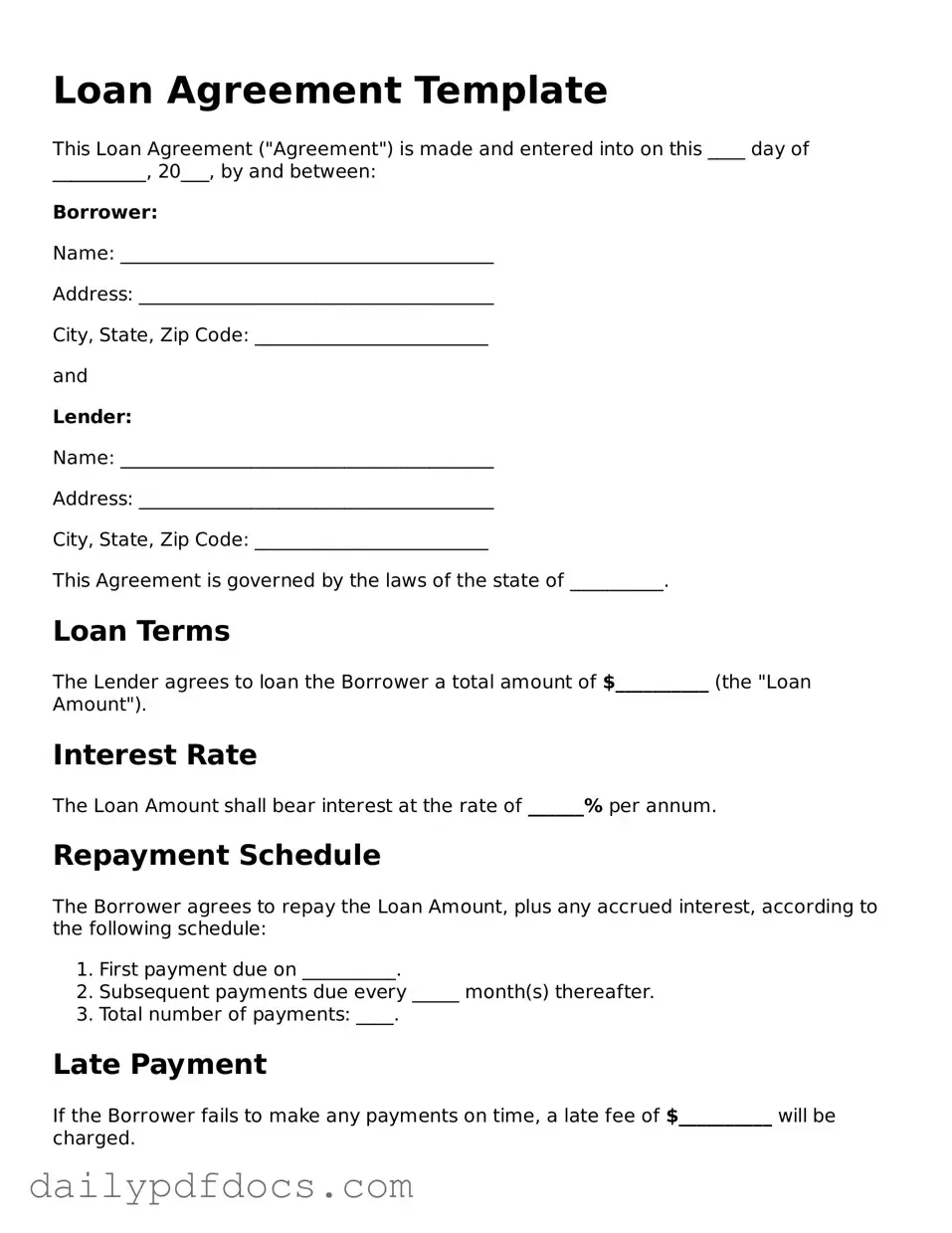Loan Agreement Template
This Loan Agreement ("Agreement") is made and entered into on this ____ day of __________, 20___, by and between:
Borrower:
Name: ________________________________________
Address: ______________________________________
City, State, Zip Code: _________________________
and
Lender:
Name: ________________________________________
Address: ______________________________________
City, State, Zip Code: _________________________
This Agreement is governed by the laws of the state of __________.
Loan Terms
The Lender agrees to loan the Borrower a total amount of $__________ (the "Loan Amount").
Interest Rate
The Loan Amount shall bear interest at the rate of ______% per annum.
Repayment Schedule
The Borrower agrees to repay the Loan Amount, plus any accrued interest, according to the following schedule:
- First payment due on __________.
- Subsequent payments due every _____ month(s) thereafter.
- Total number of payments: ____.
Late Payment
If the Borrower fails to make any payments on time, a late fee of $__________ will be charged.
Prepayment
The Borrower may repay the Loan Amount in full or in part at any time without penalty.
Governing Law
This Agreement shall be governed by and construed in accordance with the laws of the state of __________.
Signatures
By signing below, both parties agree to the terms outlined in this Loan Agreement.
Borrower's Signature: ____________________________________
Date: ____________________________________________
Lender's Signature: _____________________________________
Date: ____________________________________________
